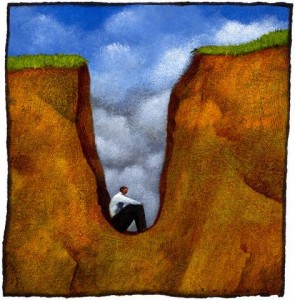When it comes to survival, innovation, and evolutionary improvement, no business theorist has anything on Mother Nature. Her success record running the business of Earth is quite undeniable. Even as her most destructive creatures grow increasingly effective at polluting and fracking and discarding, she continues to evolve and survive.
Business owners and leaders can learn a lot from Mother Nature. And the lesson that supports all the other lessons exists in all of us, in our DNA. She figured out a long time ago that the more you mix up the DNA of things, the stronger those things would be. Oh, no doubt she developed some beings destined for dead ends (Neanderthals, perhaps Aardvarks), but those relatively few false starts didn’t turn her off on evolution. No, she kept going, full steam ahead, committed to the idea that DNA could be strengthened, could survive, if it kept seeking and accepting new elements.
Of course, organisms do reject certain DNA modifications, and some DNA modifications can lead to disease and death. The process of evolution can be messy. But the one constant is change, the structural variations that lead to human and plant genetic variation. The other constant is that the less the DNA changes, the more likely it is to suffer disease and undesirable mutation – which is the scientific reason why close family members are discouraged from procreating (that and the blech factor).
I read yesterday that Starbucks employee demographics include over 40% minorities, which is within striking distance of the actual ratio of white to non-white people in the United States. But Starbucks doesn’t just tolerate the diversity. They honor and embrace business diversity as an important part of their company culture, whether through their constant and high-quality focus on professional development for their employees (75% of store and district managers are internal promotions), or by creating forums for employees to openly discuss the issue of race in America. They’re not perfect (see above: evolution can be messy), but Starbucks is working hard to keep their DNA as diverse as possible.
As a strategy consultant to small business owners, I spend an extraordinary amount of time in workplaces that are homogeneous at best. Some of this is natural. If the business only employs three people, and those three people are mom, dad, and junior, then the gene pool is pretty slim. But this lack of diversity extends way beyond small family companies, and it exists in companies owned by people of all cultures. Even when there is ‘visual’ diversity, with a token someone-or-other as a nod to social compliance, I often observe that the token person is sidelined, either through genuine bigotry in the back office or passive discrimination in the form of un-inspected biases present in the other members of the group.
This isn’t just about race either. Businesses that won’t hire millennials, senior citizens, people with tattoos, gays, trans-gendered, people of different religions, the differently abled, people who dress funny; those businesses are crimping their DNA just as surely as a business that won’t hire someone of a different race or culture.
Why do we need these people, these different people, to work with us? Sure, it’s the right thing to do, but I’ve noticed that this doesn’t motivate a lot of people. No, it all goes back to Mother Nature, or at least, that fatty organ that sits in the center of your skull. That organ, your brain, may be the consistency of warm butter, but think of it like a muscle (really it’s not, it’s mostly fats). But still, think of it like a muscle. If you don’t use a muscle for a long, long time, it atrophies. When you go to use it again, it fails you. If you only use a muscle one way – for instance, if the only time you use your lats (upper back) is to put away the dishes – then your muscles will fail you if you must throw a punch to protect yourself or push something heavy.
Your brain has similar characteristics. It builds itself around the things you do all the time in all the same ways. If you find yourself in a rut, there is an actual rut in your brain, a tiny groove that reflects that you are doing things the way you always do them. The brain can be a lazy little guy if we don’t stimulate it. And businesses can become very, very lazy entities. Businesses readily fall into the rut of doing things the way they always did them. They look at all potential customers as a mirror-image of themselves. When they consider their competitors, they start from assumptions that are borne of their own thinking patterns. They fail to evolve. Neanderthals. Aardvarks.
When a business embraces many different perspectives, thought processes, world views, and communication styles, it fires up the collective brain, which – when stimulated – is more than willing to create new grooves. They improve the way they do things, they envision more multifaceted consumers, and they outthink their competitors. They evolve. It’s sort of a chicken-and-egg thing; Did the business that welcomed diversity make the people within it more diverse, or was it people that were willing to be diverse in the first place that welcomed and created a diverse workplace?
The business case for diversity continues to build, and business owners who ignore it do so at their own peril. Learning to embrace and fully incorporate people with different backgrounds and experiences, even if the differences sometimes confuse you or even make you uncomfortable, will improve your business bottom line.











